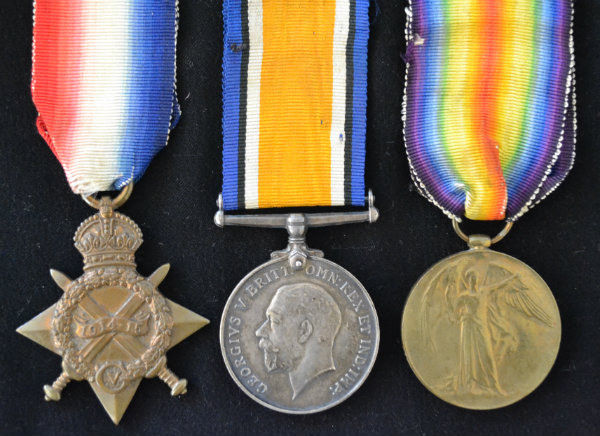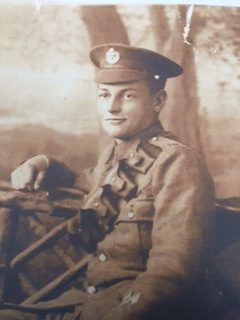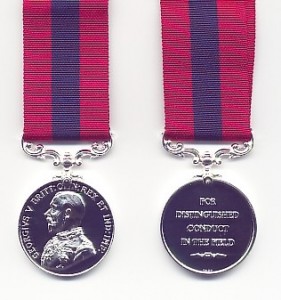Personal Details
Born: 12 August 1895.
Family: He was the youngest of six children born to William and Marion Wyatt of 19 Heath Road, Whitchurch, Shropshire. In 1924 he married Agnes Darlington and together they had 2 children – Roland D and Marion E.
Residence: From 1901 to 1919 he lived at The Firs, 19 Heath Road, Sedgeford, Whitchurch. In 1939 the family were living at Cardeston, Chester Avenue, Whitchurch, Shropshire.
Died: On 20 September 1970 aged 75.
Military Details
Regiment: Royal Engineers
Rank: Pioneer, 2nd Corporal
Service Number: 43987
Date of Enlistment:
Date of Discharge:
Reason for Discharge:
George was awarded the Distinguished Conduct Medal and Campaign Medals (1914/15 Star, British War Medal, and Victory Medal).
The following Whitchurch men were recipients of the Distinguished Conduct Medal :
43987 2nd Cpl. G. G. Wyatt, 16th Div. Sig. Coy., Royal Engineers
Whitchurch, Shropshire – 31 December 1918
11851 Pte. G. M. Sergeant, 6th Bn., King’s Shropshire Light Infantry
Whitchurch, Shropshire – 30 May 1919
67045 Bombardier George Hopwood, 33rd Brigade, Royal Field Artillery
Whitchurch, Shropshire – 3 August 1915
Bombardier J Groom
Sergeant G H Wilson

The 1914 Star (also known as 'Pip') was authorised under Special Army Order no. 350 in November 1917 and by an Admiralty Fleet Order in 1918, for award to officers and men of the British and Indian Expeditionary Forces who served in France or Belgium between 5 August and midnight of 22–23 November 1914. The former date is the day after Britain's declaration of war against the Central Powers, and the closing date marks the end of the First Battle of Ypres.
The 1914–15 Star (also known as 'Pip') was instituted in December 1918 and was awarded to officers and men of British and Imperial forces who served against the Central European Powers in any theatre of the Great War between 5 August 1914 and 31 December 1915. The period of eligibility was prior to the introduction of the Military Service Act 1916, which instituted conscription in Britain.
The British War Medal (also known as 'Squeak') was a silver or bronze medal awarded to officers and men of the British and Imperial Forces who either entered a theatre of war or entered service overseas between 5th August 1914 and 11th November 1918 inclusive. This was later extended to services in Russia, Siberia and some other areas in 1919 and 1920. Approximately 6.5 million British War Medals were issued. Approximately 6.4 million of these were the silver versions of this medal. Around 110,000 of a bronze version were issued mainly to Chinese, Maltese and Indian Labour Corps. The front (obv or obverse) of the medal depicts the head of George V. The recipient's service number, rank, name and unit was impressed on the rim.
The Allied Victory Medal (also known as 'Wilfred') was issued by each of the allies. It was decided that each of the allies should each issue their own bronze victory medal with a similar design, similar equivalent wording and identical ribbon. The British medal was designed by W. McMillan. The front depicts a winged classical figure representing victory. Approximately 5.7 million victory medals were issued. Interestingly, eligibility for this medal was more restrictive and not everyone who received the British War Medal ('Squeak') also received the Victory Medal ('Wilfred'). However, in general, all recipients of 'Wilfred' also received 'Squeak' and all recipients of The 1914 Star or The 1914/1915 Star (also known as 'Pip') also received both 'Squeak' and 'Wilfred'. The recipient's service number, rank, name and unit was impressed on the rim.



One of my Great Great Uncles , I have a photo of him if this site is interested ..
Hi Paul – many thanks for your kind offer, we’d love a copy of the photo